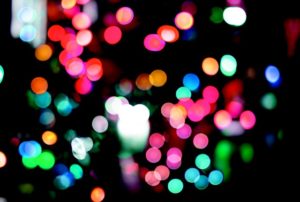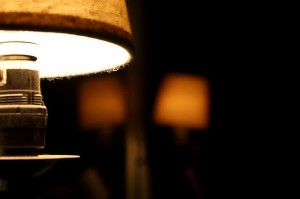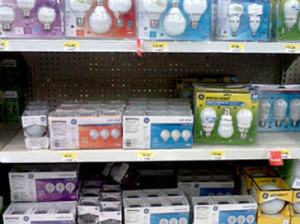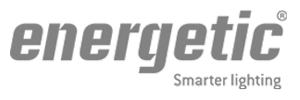 The rise of energy efficient light bulbs has opened a new world of options for consumers. Gone are the days of having to settle for electricity-hungry incandescent light bulbs; today, the most popular choices are compact fluorescent lamps (CFLs) and light-emitting diode (LED) bulbs.
The rise of energy efficient light bulbs has opened a new world of options for consumers. Gone are the days of having to settle for electricity-hungry incandescent light bulbs; today, the most popular choices are compact fluorescent lamps (CFLs) and light-emitting diode (LED) bulbs.
Although both devices are definitely more efficient than incandescent bulbs, the way each bulb produces light couldn’t be more different.
CFLs produce light by passing an electric current through a tube containing a small amount of mercury vapor and argon. This produces invisible ultraviolet light (UV) that stimulates the fluorescent coating (called phosphor) inside the tube, creating a chemical reaction that generates light.
In contrast, LEDs emit light through the movement of electrons in a semiconductor material. When a certain voltage is applied to the leads, the electrons recombine with electron holes in the device, releasing photons to produce light.
If you’re considering a lighting retrofit in your Scottsdale home, these choices may be confusing to you. LEDs, however, have a lot going for them, which we’ll explain in this post.
Fewer Watts per Lumen
A watt is the unit of power that quantifies the rate of energy transfer. With light bulbs, this refers to the amount of electricity the device uses to emit light. A lumen, however, refers to the brightness of a light source as perceived by the human eye.
In other words, watts are to electricity, while lumens are to brightness.
Where LEDs shine is in their superior energy efficiency, requiring fewer watts to generate the same intensity of light—sometimes even more—than a CFL counterpart.
For example, a 12.5-watt LED bulb could have a lighting output of 1000 lumens with an efficacy of 80 lumens per watt (1000 lumens/ 12.5 watts). On the other hand, a CFL needs about 20 watts of power to produce the same level of brightness. This means that with LEDs, you get to your lower electricity bills and reduce your carbon footprint for the same lighting brightness.
Longer Lifespan
While many manufacturers claim their LED lights can last well beyond 40,000 hours, the most you’re likely going to get is anywhere between 15,000 to 25,000 hours, with the LED staying at full brightness. But that’s still very impressive; if you were to switch on your LEDs for 8 hours every day, they’d still last well over 8 years.
That means fewer light bulb replacements, which also means fewer bulbs end up in landfills around the world.
Durability
Another plus LEDs have over CFLs is superior durability, especially when it comes to withstanding on-off cycles. While the constant switching between on and off still has an impact on an LED’s lifespan, it’s nothing close to the cumulative effect it can have on CFLs.
The solid-state engineering of LEDs also means they’re better equipped to withstand extreme temperatures, making them ideal for outdoor and street lighting.
Reduced Impact on Human Health and the Environment
LEDs generate very little infrared and ultraviolet light, both of which can damage the skin and eyes. And because LEDs generally use less electricity for a given application compared to CFLs and incandescent bulbs, your Scottsdale home will have a lower overall kW/hr consumption, helping reduce your overall CO2 emissions.
Another major downside with CFLs is their dependence on toxic substances. As mentioned earlier, CFLs contain a small amount of mercury, which makes recycling challenging. And should a CFL bulb break in your home, the small traces of mercury vapor inside can be hazardous to infants and small pets.
Although LED bulbs are more expensive than CFLs, you’re guaranteed a return of investment through savings in reduce power consumption and fewer bulb replacements in the long run.


 Apartment Lighting
Apartment Lighting Area Lighting
Area Lighting Automotive Lighting
Automotive Lighting Building Wall Pack Lighting
Building Wall Pack Lighting Canopy Lighting
Canopy Lighting High & Low Bay Lighting
High & Low Bay Lighting Industrial Lighting
Industrial Lighting Parking Lots & Garages
Parking Lots & Garages Pathway Lighting
Pathway Lighting Retail Lighting
Retail Lighting Stairwell Lighting
Stairwell Lighting























